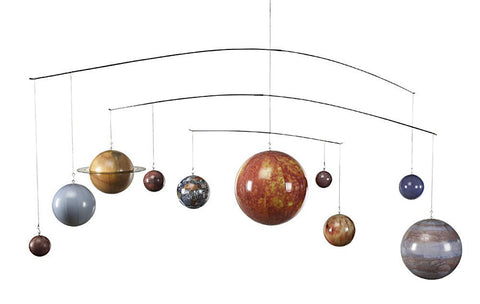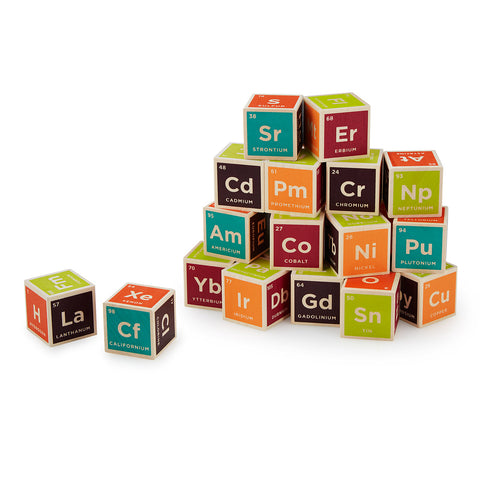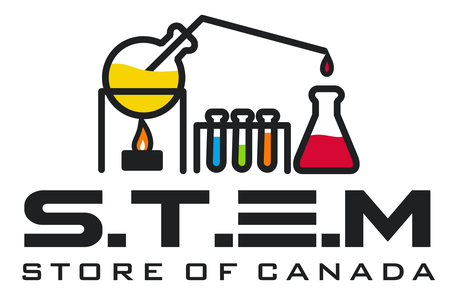Children are full of questions. As parents, family members or teachers we’re often eager to give them answers, but should we?
By asking the questions, rather than answering them, providing the tools and guidance, you empower children to figure it out for themselves. Yes, you’re helping them develop problem-solving skills, but more importantly, you’re helping them to understand which questions to ask in the first place.
Science, technology, engineering, and mathematics activities have become a popular topic in education. Encouraging kids to think, explore and solve problems is a pillar of our education system. These are the skills young adults need to get great jobs and crack big questions.
Playing is fun, it feeds the mind. Playing inspires and excites the passion in our children. That moment, when a child is so overtaken with excitement and passion they shake! That’s what these Educational & Science Toys are all about.
I’m a big kid at heart, so reviewing my favourite 25 STEM toys is a joy. Plus, what better feeling can you have than to see a child smile brightly and become engaged in an activity you've given them? For all of the products below that we've tried, my kids told me without hesitation, "that was awesome!".
- The Best Educational & Science Toys for Babies
- The Best Educational & Science Toys for Preschoolers & Toddlers
- The Best Educational & Science Toys for Key Stage 1
- The Best Educational & Science Toys for Key Stage 2 & Teenagers
The Best Science Toys for Babies
1. Solar System Mobile
What better way to learn about the solar system than this beautiful, educational mobile.

We can't wait to receive this; it looks like so much fun. You can hang it from your child's ceiling and learn the Solar Systems song together (check out the video below). For the grown-ups, after listening to the full song, ask yourself: did you know all of those things about the solar system before you heard the song? (be honest :-)
2. Boon Pipes Building Bath Toy Set
Who would think leaky pipes could be such good fun. Every bath time you can set to work with your young one and fix the water works. These are perfect for helping your baby refine their motor skills.
- They are learning how to operate their fingers independently.
- They will be starting to point to objects they want.
- Use hand signals to let you know they want to be held or picked up.
- And they can manipulate the objects around them with more dexterity.

3. Quantum Physics for Babies Book
Quantum mechanics is notoriously perplexing but apparently, babies are in a unique position to understand it. In fact, Newborn babies are the only people alive who intuitively understand quantum mechanics, says Seth Lloyd, an expert on quantum computing.
So it makes sense you should get a copy of Quantum Physics Babies by Chris Ferrie. It has incredible reviews! The books is a colourfully simple introduction to the principles of quantum physics.

4. Periodic Table Blocks
Ideal for: Developing motor skills.

We love these durable wooden blocks. There is a crucial period in the development of your baby's fine motor skills when they will start to coordinate thoughts with hand movements. Block-like toys that are easy for a child to handle are perfect for developing their basic motor functions. When your kids get older, and they start wondering what all those symbols and names on their favourite blocks mean, they can't help but ask great questions!
5. Build a Volcano
Ideal for: Learning chemistry (and having fun)!
Homemade volcanos are always fun, no matter how many times you do them. Not only do your kids get to learn about the incredible power of these geological formations they also learn some real chemistry that's very safe.
Building a volcano is simple and only requires basic materials that you can find around the home (usually just vinegar and baking soda).
There are loads of great tips here on learning4kids.
The Best Science Toys for Preschoolers & Toddlers
Educational toys for preschoolers & toddlers as they develop a sense of self and their early reasoning skills.
6. 3D Solar System
Ideal for: Learning about the planets, Solar System and orbits.
Children are fascinated by the night sky and learning about the Solar System is never dull.
The 3D Solar System will take your kids to the moons of Jupiter and explore the distant planets. You can take your children on a trip through the expanse of the universe and discover just how much there is in Space (we think it's breathtaking).
Teach Kids How & Kids Astronomy has some great tips for teaching your children about our solar system.
7. Create a Vortex - Tornado Tubes
Ideal for: Learning about the forces of nature and how air pressure and density can work together.
Experiments: Try different liquids & additives (eg., food colouring, dish soap, coloured oils, etc.).
A Tornado Tube provides a dramatic, safe, hands-on demonstration of real vortex action.
8. Robot Turtles Code Game
Ideal for: Learning programming skills.
The Robot Turtles Code Game is the most-backed board game in Kickstarter history!
Robot Turtles teach young children the basics of coding.
They won't even realise that they are learning coding skills. They will be having fun helping their Robot Turtle reach a jewel. To move their turtle players use Code Cards to go either forwards, left or right. If they make a mistake, they can use a Bug Card to undo a move.
9. Prisms
Ideal for: Demonstrating light principles and the colours of the spectrum.
Experiments: Splitting light into the colours of the spectrum.
This cool Mini-Lab shows you how to use a prism to split out the white light into the colours of the spectrum, and recombine them into white light, just like Newton's famous experiment.
Once you have recreated the experiment, then what? A prism is probably not at the top of your list of things to pack into your camera bag, but they can be used to get some amazing shots. Contrastly's blog gives you some great tips.
There are lots more of Newtons light and prisms experiments here.
For the best explanation of how a prism works we've seen, check out the video below.
The Best Science Toys for Key Stage 1
Children at this young age are experiencing tremendous intellectual development. A child's brain reaches 95% of its adult weight by age six. Children are showing rational decision-making skills and their reasoning skills start to emerge.
Now is an excellent time to feed their inquisitive minds with hands-on, playful experiments.
10. Roman Arch Mini-Lab
Ideal for: Young architects, engineers, builders, physicists.
How much weight can it take?
An arch is one of the most elegant structures in architecture, but gravity can cause it to crash if it’s not structurally sound. To prevent a collapse, architects came up with several tricks to keep their arches standing, including buttresses, pointed arches, and pinnacles.
This Roman Arch is a brilliant way for children to play and learn about the strength of the Roman arch.
PBS learning media has a great interactive arch build activity you can play here.
Also, check out the cool video below that explains the secrets of how arches work.
11. Hero Steam Turbine
Ideal for: Young engineers & mechanics.
Before internal combustion engines, there were steam engines. We used steam to power the enormous engines in our trains, boats, factories and even early cars.
Have you showed your children the steam escaping out the top of the kettle?
You can use the elegant HERO steam turbine to show them how the energy in steam can be captured and converted into a surprising amount of kinetic energy.
12. The Differential
Ideal for: Young engineers & mechanics.
Experiment: Build the differential into a scale working vehicle.
How do you explain to a young mind how a car can give smooth power to both inside and outside wheels around a curve?
The differential is the genius behind it, but try explaining to a young mechanic how the gears work to give a smooth ride. If your car didn't have a differential the wheels would bump, jump and grind around any bends.
Using a LEGO assembly to demonstrate the differential gear in a car your children can touch, feel and see the ingenuity and engineering brilliance.
13. Amazing Flip Over Tops
Ideal for: Explaining momentum and mass.
Experiments: Try them on different surfaces, race them.
Flip Tops will flip right over onto their stem if you spin them fast enough. It takes a practice try or two but it is not difficult. These tops are not recommended for kids under six as they haven't yet developed the proper dexterity to get the tops to work.
As the top flips, the stem turns downward and touches the ground. The friction force between the stem and the ground causes the top to turn over completely.
The top tips over initially because it is dynamically unstable, but after flipping over (with the stem down), it becomes dynamically stable.
14. Aerogel (Lightest Known Solid to Exist)
Experiments: Levitating aerogel with static electricity, try microwaving it or observe its apparent changing colour caused by Rayleigh scattering (smoky blue against dark backgrounds, yellow against bright backgrounds). In fact here are loads of Aerogel Experiments.
Aerogel is the lightest solid known to exist! It was used by NASA in the 1999 Stardust mission to collect comet & interstellar dust samples & the Pathfinder Rover to insulate its components.
Aerogel is silicon dioxide, the same material as ordinary glass; only it is 1,000 times less dense. It holds 15 Guinness Book of World Records.
15. SunArt
Ideal for: Introducing children to basic photography.
Experiments: Spread different sunscreen on paper and test which is the most effective. Try out the best UV-blocking sunglasses. Create amazing pictures.
Cyanotype involves exposing materials treated with potassium ferricyanide and ferric ammonium citrate, both of which are very safe, to a UV light source like the sun. The exposed parts of the paper will undergo chemical change, whereas the portions covered by an object will be unaltered. The parts exposed to the sun turn a shade of Prussian blue, while parts that were covered by your object will be white.
16. Pyrolytic Graphite (Graphene) - 'Ice Knife.'
Ideal for: Demonstrating conductivity & heat diffusivity.
Experiments: Levitation, cutting through ice, build your own levitation device.
Pyrolytic Graphites thermal conductivity is almost 5X better than Copper and Silver. It's bordering on superconductive at room temperature and can hover above a magnet.
It has incredible heat diffusivity because of the low specific weight. The heat transfer speed is 20X higher than Copper.
A piece of pyrolytic graphite is the bluntest 'knife' you will ever see, however, hold it in your hand, press it on ice, and it will cut straight through the ice using only the heat of your hand!
When you touch the ice knife on the ice cube, you instantly feel the cold through the knife.
Everyone is familiar with magnets that attract ferrous metals like iron. What's less known is that there are materials that are repelled by a magnetic field.
Almost everything is diamagnetic, but you don't see it because the diamagnetic effect is much weaker. Graphene, bismuth and silver show strong diamagnetic effects so can hover.
17. Rattleback
Ideal for: Newton's laws of motion, Coriolis force, centrifugal forces and motion of an object in an inertial frame of reference.
The rattleback has many names: anagyre, celt, Celtic stone, rebellious celt, rattlerock, spin bar, Robinson Reverser, wobble stone and more.
It’s a semi-ellipsoidal top which will rotate on its axis. For most rattlebacks, they will spin normally in one direction, but if rotated in the opposite direction, they will become unstable, "rattle", stop, and then reverse to spin to the preferred direction!
This spin-reversal appears to violate the law of the conservation of angular momentum, however, they obey all the laws of physics. Find out more about this fascinating device here: http://en.wikipedia.org/wiki/Rattleback.
For a brief demonstration of a Rattleback in action, check out this short video:
18. Hand Boiler
Ideal for: Demonstrating energy transfer
Wrap your hand around the bottom of the glasses, and you will see the liquid "boil" and rise to the top chamber! As your hand warms the bottom, the gas pushes the liquid upwards.
19. Bernoulli Kit
Ideal for: Learning about the Bernoulli principle, air pressure, Newton's First Law of Motion and Gravity.
Experiments: Levitate a ball, fill an 8-foot long bag with only one breath.
The Bernoulli science lab kit is a great place to learn about how aeroplanes fly.
For a neat demonstration of one application of Bernoulli's principle, check out the video below:
The Best Science Toys for Key Stage 2 & Teenagers
As they grow from small children into young adults, they are desperate to understand the world around them. They have begun developing their own opinions about the world and are ready to find new experiences.
Most children crave new ideas and demand mental stimulation. To be mentally active is as important as being physically active.
20. Prime Climb
Ideal for: Deeper mathematical understanding and mastering arithmetic
Prime Climb is a multi-award winning maths game.
- Academics’ Choice Brain Toy Award Winner!
- Tilliwig Brain Child Award Winner!
- Dr Toy Best 10 Educational 2015 Award Winner!
- Dr Toy Best 100 2015 Award Winner!
- Parents’ Choice Silver Honor Winner!
- Recommended by American Mensa!
Designed for 2 to 4 players you have to add, subtract, multiply and divide your way to the centre of the board. For children 10+ through to professional mathematicians, Prime Climb is great fun for families, schools, kids & adults.
The first player to land on 101 wins the game, but the optimal gameplay and a winning strategy take a lot of mental skill.
Prime Climb is a great game if you want to improve your mental math or gain deeper insight into arithmetic using Prime Climb’s unique colour coding.
21. Feel Flux
Ideal for: Demonstrating magnetic fields, Lenz's Law, Faraday's law of induction.
Experiments: Build your own Feel Flux, you can even use Faraday's law of induction to melt metal!
Drop a magnetic ball inside an alloy tube, and watch how slowly the ball falls.
Feel Flux uses science that is surprisingly complex. It is not the familiar attracting or repelling force of magnets. It's an entirely different effect called "Lenz's law", that relies on Faraday's law of induction.
The Feel Flux tube is a highly conductive alloy; it creates electric currents that flow around the walls of the tube. According to the law of excitation, the current generates a second magnetic field that affects the magnetic field of the ball.
Lenz's law states that this additional magnetic field is always directed to oppose the motion that has generated it.
The ball moves downward.
The faster the motion, the stronger the slowing force becomes.
22. Double Slit Experiment
Ideal for: Demonstrating the wave nature of electrons
The Mini-Lab includes everything you need to recreate Thomas Young's famous double-slit experiment.
Thomas Young's experiment demonstrated that light could behave like a wave. Subsequent work has shown that light (and particles) can show the characteristics both of waves and particles (thus the modern term "wave-particle duality").
This experiment can be mind blowing. It throws into question the role of the observer and demonstrates the fundamental limitation of an observer to predict experimental results.
Richard Feynman called it "a phenomenon which is impossible ... to explain in any classical way, and which has in it the heart of quantum mechanics. In reality, it contains the only mystery of quantum mechanics."
Jim Al-Khalili can explain it better than me: check out the excellent video below.
23. Mancala
Ideal for: Strategic thinking & maths.
Mancala is a count and capture game that promotes math and strategic thinking skills. The game encourages thought experiments, counting and tactical gameplay. Players must think through in their head before they move their pieces.
There is a great blog here about how to play Mancala.
Mark Rawlings has written a computer program to extensively analyse both the "standard" version of Kalah (the North American version of Mancala) and the "empty capture" version, which is the primary variant. His database included the perfect play result of all 38,902,940,896 positions with 34 or fewer seeds. Versions with 50 or more seeds are much more complicated, naturally.
For a brief overview of how to play, check out this short video:
24. Strandbeest
Ideal for: Learning mechanics & engineering.
Physicist-turned-artist Theo Jansen has been creating strandbeests since 1990. These self-propelled creatures walk like giant monsters across the earth. They are incredible to watch and such fun to build yourself.
Check out this very engaging and informative video from Tested.com:
25. Gyroscopes
Ideal for: Teaching momentum conservation principles
Experiments: Balance on a tightrope, rotation and gyroscopic precession
Gyroscopes are the coolest of science toys. Their design consists of a freely rotating disk called a rotor. The rotor attaches to a spinning shaft (an "axis") mounted in the centre of a frame. As the axis and rotor spin, the rotor has what's called angular velocity. Angular velocity makes the Gyroscope stable, and when it's allowed to maintain its spin independently of the frame, the Gyroscope is incredibly useful for measuring or maintaining orientation.
Many amazing products and modes of transport rely on Gyroscopes: Segway Scooters, Ship stabilisers, Virtual Reality, Racing Cars, Aircraft, Rockets, Gyrocompasses and much more!
 For help and advice +1 (778) 822-8658 or email Rob.Law@ssoc.ca
For help and advice +1 (778) 822-8658 or email Rob.Law@ssoc.ca

